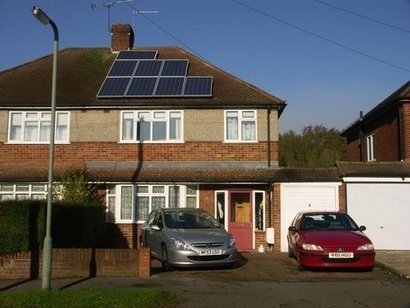
By the end of this year, the UK will have about 20 gigawatts of solar generation capacity in place, supplemented by 8 GW of storage capacity. As its manifesto for solar energy and energy storage states, Solar Energy UK believes that 50 GW of solar is needed by 2030, with 30 GW of zero-carbon energy storage.
These goals would be in line with the current Government’s target of 70 GW of solar by 2035 and the National Infrastructure Commission’s recommendation of delivering 60 GW of short-term energy flexibility by 2035.
Solar Energy UK believes that an ambitious roadmap toward them should be published within the first hundred days of a new Government, based on work already undertaken by the Solar Taskforce
“There is a global race to deliver clean power, not only to solve the climate crisis, but also to bring secure, affordable energy for all” said Chris Hewett, Chief Executive of Solar Energy UK. “The solar energy sector is now leading that race worldwide and Britain needs a government that fully embraces solar so we can reap the benefits for our economy, people and environment.”
Investors are willing to invest in UK solar and storage at all scales, although there are challenges to unleashing the capital required that only the Government can overcome. Lighting the way to a renewable future means resolving both an inconsistent planning regime and a “lack of joined up thinking on the symbiotic relationship between energy security, food security and restoring nature. We do not have to choose one over the other,” says the Solar Energy UK manifesto.
It also means delivering consistency in planning decisions. Failing to respect established national policy has led to solar planning refusals being overturned more than any other kind of development – bad for investment, bad for the taxpayer and needlessly extending our reliance on fossil fuels.
The next Government has an opportunity to send a positive signal through swift decisions on three nationally significant infrastructure projects, which together come to well over a gigawatt.
Rooftop solar power is hugely popular. There are now over 1.5 million small-scale installations across homes, businesses and community buildings across the UK, almost half of them installed after the end of subsidies in 2019.
However, there is still a role for Government in ensuring that solar and storage technologies are available for low-income households, and communities that want to invest in their own projects on schools and other public buildings. Building standards must also be overhauled urgently, while peer-to-peer energy trading must be enabled to allow schools, community projects and businesses to buy and sell power locally.
Inadequate electricity networks mean that we can now build most renewable energy assets faster than we can connect them – a major impediment for solar farms, large battery projects and commercial-scale rooftop investments, alike. Maintaining the slow pace of connections would put current and proposed targets out of reach – even net zero itself. Solving this problem means ensuring that Ofgem allows greater and faster investment in the grid, improving service from operators and modernising grid management.
The renewables sector will create thousands of jobs over the next decade. The next government should work with industry to promote career opportunities in it, with a network of green skills hubs offering training in regions where we know that renewables deployment will be extensive. There is also a need for Government support to expand domestic manufacturing of solar-related technologies, such as switchgear, cabling, batteries and mounting systems.
“The UK must not fall behind EU, US, China, India and others in the global race for clean energy investment,” adds the manifesto. That means ensuring that solar and energy storage has a level playing field with other energy technologies and other countries.
More than 11 GW of solar capacity is approved and awaiting construction. But the current budget allocation for Allocation Round 6 of the Contracts for Difference scheme will facilitate the development of less than 2 GW, putting targets at risk.
The next government should also ensure that the Electricity Generator Levy, the Capacity Market, Balancing Mechanisms and the Review of Electricity Market Arrangements (REMA) attracts investment in clean energy, with storage and flexibility to provide backup.
For additional information:

